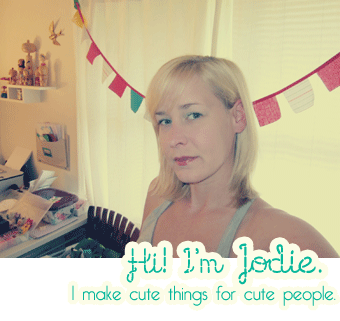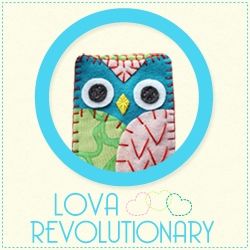Here's what you need to get started doing embroidery:
Fabric
Floss
Scissors
Sewing Needle
Embroidery Hoop
Embroidery Transfer Tools (sometimes tracing paper)
Printed Design
1. Some floss! I use DMC floss which is found at most big box craft stores. There are also big multipacks of floss that you can get that is off brand but really it's just not as nice for embroidery - it's less silky and tends to knot up more than your lovely DMC floss. Now if you want to make friendship bracelets go for the multipack. Floss cost anywhere between .30 and .40 cents per skein, if there's an AC Moore near you they put it on sale 4 for $1 on a regular basis!
2. Some hoops and fabric - I try to use a hoop that's just slightly bigger than my design. If you're embroidering a really big design use a smaller hoop and just move it around your design. If you plan on framing your embroidery in your hoop go for a size or two bigger than your design. I love to find vintage hoops at the thrift store - they're just so nice and thick and sturdy! Rummage through your Grandma's attic, I'm sure you'll find some! Otherwise, hoops cost about $1-$3 depending on the size.
As far as fabric, you can really embroider on almost any type of material but a heavy weight cotton or light canvas (think canvas tote bag style) work the best. If you use a thinner weight cotton or silky fabric you may want to put a piece of interfacing behind it. In fact, I use interfacing behind most of my embroideries just to make my fabric more sturdy and it also helps to hide some of your floss from showing through to the front of your design if you don't want it to.
3. Sewing needles - you can find multipacks of sewing needles just about anywhere that carries fabric. I like the feel of a thicker needle so I buy the multipacks of needles for embroidery or upholstery and use the longest/thickest ones. Thick needles are also awesome because they have a big hole at the top and you won't find yourself wanting to punch something because you've tried to thread your needle 55 times and just can't do it! These will run you about $2.
4. Small Sharp Scissors - when you embroider you do a lot of floss snipping so having a small handy pair of sharp scissors is useful. I love my Fiskars Microtips - they are my go to scissors for embroidery and for cutting out felt because they're super duper sharp and easy to wield - like a sword except like a really small one. When I started I used to use metal scissors but I found after many hours of embroidery or sewing they would start to feel heavy and make my hands hurt so I discovered my Fiskars Microtips and never went back!
5. Tracing Paper - if you're transferring a diy PDF pattern sometimes you need tracing paper to become your iron on transfer depending on what method you use. If you decide to use an Iron On Pencil or a Sulky Pen you'll need some tracing paper. A pad of many sheets of Tracing Paper is about $2, just get the cheapest one you can find!
Transfer Methods for PDF Printed Patterns:
DMC Carbon Transfer Paper - this is a carbon copy sheet that comes in two colors blue and yellow and can be found at most big box craft stores, it's about $3 for 4 sheets. The yellow is for transferring your design to dark fabrics and the blue is for transferring to light fabrics.
How to use it:
It's super easy to use, all you do is lay your fabric on a hard surface, place your carbon transfer paper color side down on top of your fabric and your printed pattern on top of your transfer paper. Use a stylus or a ball point pen and trace over your printed design pressing hard so that your carbon paper transfers to your fabric. Sometimes I go over my lines multiple times to make them nice and bright and easy to see. This transfer is not permanent so it can fade away over time. The plus is that your lines will gradually disappear making them less noticeable on your finished piece.
Aunt Martha's Iron On Transfer Pencil - these are pencils that can be used to transfer your design to fabric but you'll also need some tracing paper. I've only seen these in red but maybe they come in other colors as well. They run about $2 for a two pack. Be sure to have your pencil sharpener handy or you'll end up with thick lines.
How to use them:
These are really easy as well and I've been favoring these over other transfer methods lately. First you'll print your reversed version of your PDF pattern and then layer a piece of tracing paper over top of it. You use the reversed version of your pattern because you will be flipping your tracing paper pencil side down and so your design will be the correct direction when you transfer it. Place them both on a hard, smooth surface - I like to put a small piece of tape at the top the keep my design from sliding around. Then trace your design using your Transfer Pencil onto your tracing paper. Next, take your tracing paper pattern and put it face down (pencil marks down) on top of your fabric and using a hot iron (no steam) press firmly and hold for a few seconds until your design is transferred. It only takes a few minutes and your design is usually very easy to see and is transferred forever. Okay maybe not forever, but it's not wash away and you can't rub it away like you can with carbon transfer.
Sulky Transfer Pens - these are used just like your transfer pencil but they're more like a felt tip marker. They're a little more pricey, anywhere from $10-$20 for a multipack of colors but they will permanently transfer your design and the lines and smooth and easy to see. They also come in a wide variety of colors so you can sort of match up your design to the color scheme you're using. My only beef with them is that the lines are so thick once the design is transferred sometimes they are too noticeable once you embroider over them. If you are doing a delicate design or plan to only use a few strands of your floss, I would recommend a different transfer method. They need to make a fine tip version like Sharpie! Here's a nice How-To video of Jenny Hart using a Sulky pens to transfer a design.
How to use them:
These transfer similarly to using a transfer pencil but a little more easy on your hands since you don't have to press hard or go over your design multiple times to make sure your lines will transfer. Just print your reversed pdf pattern design, place a piece of tracing paper over top of it, and trace your design using your transfer pen. Then flip over your traced design (marked side down) on top of your fabric and iron in place, hold it over your design for a few seconds to ensure that it transfers. With these pens the longer you hold your iron the darker and thicker your lines become, it takes a bit of practice to get it at first.
I hope this helps beginners to get started embroidering! It's really a fun low commitment craft and an awesome one for beginners. Much of this information is also in my embroidery patterns on Etsy and Craftsy as well. I'm also a fan of Wild Olive blog - she has a lovely series of Embroidery Basics and a wide variety of cute tutorials. There's also a ton of great stitchy resources at Feeling Stitchy Blog. When you're finished with your first piece - learn how to frame your embroidery with my DIY tutorial. Also don't forget to tag your finished pattern photos on social media with #lovahandmade - I'll be on the lookout for them so I can share your awesome creations!





































